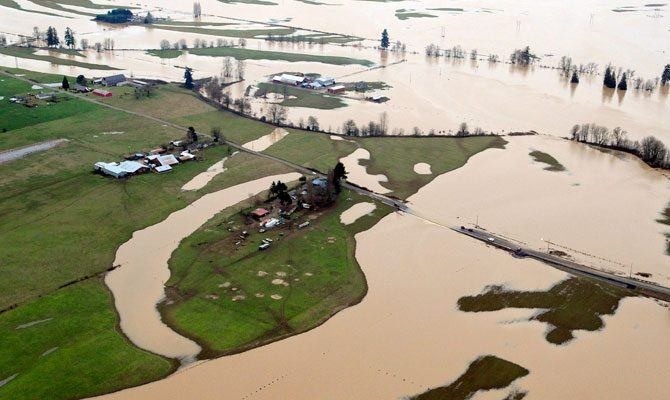When Water Destroys — Or Disappears
This is one in a series of stories; visit The Daily Meal Special Report: Water for more.
Droughts and floods are major events, wreaking havoc on everyone — and everything — they come across. And while we usually hear only about the human toll that these "acts of God" take, there's always collateral damage to local agricultural systems.
Droughts and Floods Throughout History: A Timeline
In the United States alone, agriculture contributes at least $200 billion to the economy annually, according to the United States Environmental Protection Agency (EPA), and the slightest change in what's produced can have serious effects. Floods and droughts have an immediate impact on crops and livestock alike. If there's no precipitation for a long period of time, crops wither and die. Droughts also reduce the amount of space where livestock can graze, and the associated heat waves can cause heat stress in livestock, resulting in deaths, disease, fertility reduction, and a decrease in milk production. Floods can wipe out entire farms, even entire agricultural regions — for example, in 2008, the Mississippi River flooded right before harvest, with a loss to farmers in portions of Wisconsin, Iowa, Illinois, and Missouri of an estimated $8 billion worth of crops — and aside from the drowning of livestock during floods, the aftermath can create a breeding ground for deadly mold, parasites, and pathogens.
According to the United States Department of Agriculture (USDA), more than 80 percent of the nation's water goes toward agriculture, and in 2015, the department designated 761 U.S. counties as disaster areas. In California alone, which is in the middle of the worst drought on record, crops have withered up and more than $2.7 billion has been lost from the California agriculture economy. The U.S. Drought Monitor shows that wide swaths of the country are in an extreme or exceptional drought at this very moment. Thankfully, farmers are beginning to take action; in Sonoma County, for example, recycled water is now used in agricultural production, irrigating thousands of extra acres of farmland, and new technologies are constantly being developed to help address agricultural water needs.
These new technologies may help fend off long-term damage from drought for the time being, but they don't solve the problem of increasing global temperatures, and they don't address the issue on a worldwide level. Droughts and floods are always going to be a major agricultural concern, and they've affected agriculture for as long as humans have been planting crops. Read on to learn about some of the worst droughts and floods in history.
